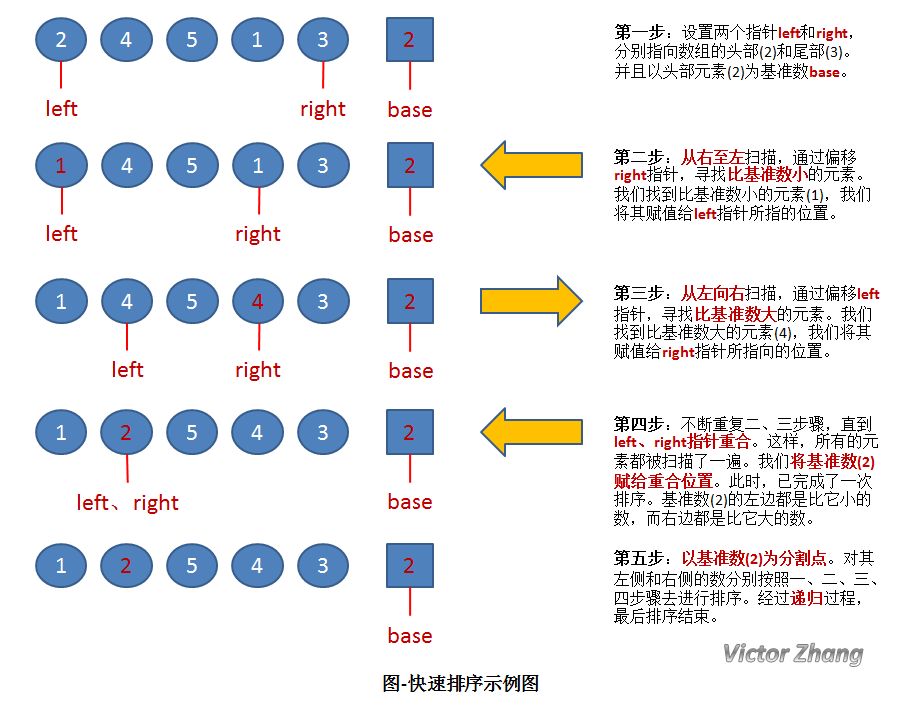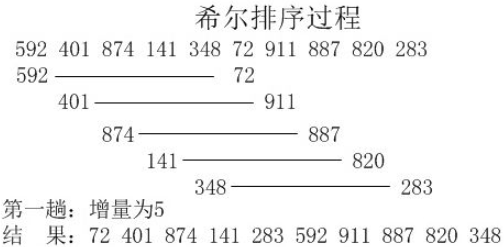各种算法以及时间复杂度和空间复杂度
可视化网站(超级直观):https://www.cs.usfca.edu/~galles/visualization/Algorithms.html
算法稳定性:算法稳定性指的是排序序列中有两个元素相等,而且在排序前和排序后两个相等的元素的相对位置不变
时间复杂度和空间复杂度一览:

冒泡排序:https://www.cnblogs.com/jingmoxukong/p/4302718.html
public void bubbling(int[] list) { for (int i = 0; i < list.length-1; i++) { for (int j = 0; j < list.length-i-1; j++) { if (list[j] > list[j+1]) { int temp = list[j]; list[j] = list[j + 1]; list[j + 1] = temp; } } } }
选择排序,从头至尾扫描序列,找出最小的一个元素,和第一个元素交换,接着从剩下的元素中继续这种选择和交换方式,最终得到一个有序序列(和冒泡不同的是,冒泡一直都在判断并且交换,而选择排序是先找到下标,然后再交换)。
public void selectSort(int[] arrays) { for (int i = 0; i < arrays.length - 1; i++) { int min = i; for (int j = i + 1; j < arrays.length; j++) { if (arrays[j] < arrays[min]) { min = j; } } if (min != i) { int temp = arrays[i]; arrays[i] = arrays[min]; arrays[min] = temp; } } }
快速排序(设置left,right和基准数):
①先从队尾开始向前扫描且当low < high时,如果a[high] > tmp,则high–,但如果a[high] < tmp,则将high的值赋值给low,即arr[low] = a[high],同时要转换数组扫描的方式,即需要从队首开始向队尾进行扫描了
②同理,当从队首开始向队尾进行扫描时,如果a[low] < tmp,则low++,但如果a[low] > tmp了,则就需要将low位置的值赋值给high位置,即arr[low] = arr[high],同时将数组扫描方式换为由队尾向队首进行扫描.
③不断重复①和②,知道low>=high时(其实是low=high),low或high的位置就是该基准数据在数组中的正确索引位置.
通过一张图更容易了解

private static void quickSort(int[] arr, int low, int high) { if (low < high) { int index = getIndex(arr, low, high); quickSort(arr, 0, index - 1); quickSort(arr, index + 1, high); } } private static int getIndex(int arr[], int low, int higt) { int temp = arr[low]; while (low < higt) { while (low < higt && arr[higt] >= temp) { higt--; } arr[low] = arr[higt]; while (low < higt && arr[low] <= temp) { low++; } arr[higt] = arr[low]; } arr[low]=temp; return low; }
插入排序(直接插入排序 ):
直接插入排序相当于是在一个有序的序列中一个一个的插入,使得总体有序。比冒泡和选择排序快,用户小规模排序和数据基本有序时的排序。如果数据规模较大且数据无序时还是使用希尔排序。
public static void insertSort(int[] arr) { for (int i = 1; i < arr.length; i++) { int j = i; while (j > 0 && arr[j] < arr[j-1]) { int temp = arr[j]; arr[j] = arr[j-1]; arr[j-1] = temp; j--; } } }
插入排序(希尔排序,基于直接插入排序):
也叫缩小增量排序法,逐渐缩小增量,对选中的元素进行直接插入排序。

上面是一趟排序,然后逐渐缩小增量,最后实现增量为0,即对全部元素进行直接插入排序算法。第二个for循环开始,其实执行的就是直接插入排序,但是其并不是直接将增量中数字一次性排完,而是不同的分组之间交替排序。因为在第二个for循环中是i++(这里可能描述的有点混淆,可以先看代码,第一次看此代码的时候被困在这个地方)
public static void shellSort(int[] arrays) { //增量每次都/2 for (int step = arrays.length / 2; step > 0; step /= 2) { //从增量那组开始进行插入排序,直至完毕 for (int i = step; i < arrays.length; i++) { int j = i; // j - step 就是代表与它同组隔壁的元素 while (j - step >= 0 && arrays[j - step] > arrays[j]) { int temp = arrays[j]; arrays[j] = arrays[j - step]; arrays[j-step]=temp; j = j - step; } } } }